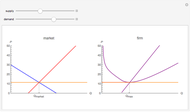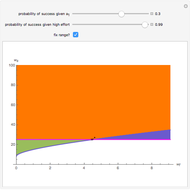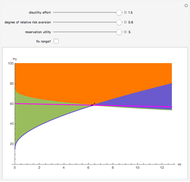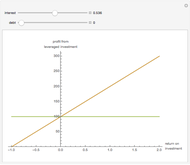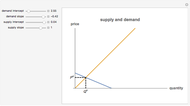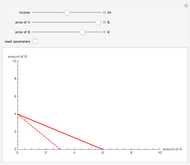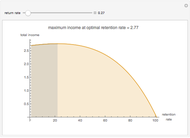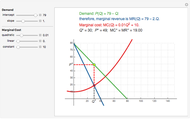Monopoly Profit-Maximization with Quadratic Marginal Cost

Requires a Wolfram Notebook System
Interact on desktop, mobile and cloud with the free Wolfram Player or other Wolfram Language products.
A firm possessing market power faces a downward-sloping demand curve. An important consequence of the firm's market power is that its marginal revenue is less than price. If the firm produces in the short run, the profit-maximizing output is found where marginal cost equals marginal revenue. This Demonstration shows a linear demand curve (green), its associated marginal revenue curve (blue), and the firm's marginal cost curve (red); mouse over the curves to identify them. The point where the marginal revenue and marginal cost curves intersect is identified as well as the point the firm uses to set the profit-maximizing price; mouse over these points to identify them.
Contributed by: Thomas Mitchell (March 2011)
Open content licensed under CC BY-NC-SA
Snapshots
Details
This Demonstration lets you change the parameters that define the linear demand curve (and, therefore, the marginal revenue) and the marginal cost. You can track the two points where  determines the profit-maximizing output and the point on the demand curve that determines the profit-maximizing price for the seller to charge. The snapshots show that the Demonstration accommodates three "shapes" for marginal cost.
determines the profit-maximizing output and the point on the demand curve that determines the profit-maximizing price for the seller to charge. The snapshots show that the Demonstration accommodates three "shapes" for marginal cost.
Snapshot 1: quadratic marginal cost
Snapshot 2: linear, but not constant, marginal cost
Snapshot 3: constant marginal cost
Permanent Citation
"Monopoly Profit-Maximization with Quadratic Marginal Cost"
http://demonstrations.wolfram.com/MonopolyProfitMaximizationWithQuadraticMarginalCost/
Wolfram Demonstrations Project
Published: March 7 2011







